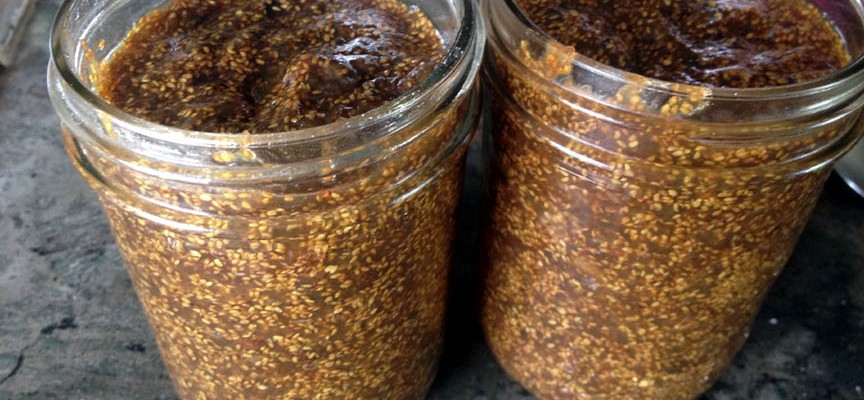
Cecropia posted by The Lorax March 19, 2008
About seven years ago, I was in Miami for the Dale Chihuly night art exhibit at the Fairchild Tropical Botanical Garden. It was thrilling beyond words. The blown glass artwork set in and around the gardens illuminated by natural and artificial light was astonishing and magical. We walked through the tropical fruit tree greenhouse and I could name almost all the fruit trees by sight. I looked up at the tall durian trees and wondered if they’d have enough height to produce their cannonball-sized fruit.
We walked around in the full moon light and sipped on our wine and listened to easy jazz music playing from a live quartet. We ventured through a tropical rain forest exhibit and there standing proudly was the Cecropia tree. In Hawaii it is fervently known as a “weed” tree. I gasped, how could they have this tree here?
A weed was once describe to me as something that grows where you don’t want it to grow. So, theoretically, if a beautiful flower was growing in your pathway it could be considered a weed. If you want a Cecropia tree growing on your land then it is not a weed.
Turns out that there is much value in the Cecropia tree. I am not the only one who thinks so. There are many ethnobotanical properties of the Cecropia. In Cuba, for instance, where almost every part of the plant is used in medicine. The fruit is used as a skin softner (emollient). There are other ways to use the fruit that are more culinary. I like to use it to make a jam that tastes just like figs.

Snake fingers, cecropia fruit
The tree grows tall and at each branch ending is where the fruit is. Not all trees produce abundant fruit but when you find one, mark the spot and go back next year. You can’t exactly pick Cecropia fruit, though it can be picked up. The fruit is cylindrical and has many fingers and could be mistaken for a bunch of snakes. In fact, it looks amazingly just like a snake’s skin.
The ripe fruits drop and lands on the grass. You will find various stages of the fruit from too dry for use to slightly green. Make sure in your gathering to collect not only brown ripe and moist fruits but some of the under ripe green fruits for this recipe.
You will need at least 4 cups of fruit. Take the fruit off its wick-like mooring and fill up a measuring cup. I don’t know this for a fact but I’m guessing the unripe, green fruit must contain a fair amount of pectin because the jam turned out to have the proper consistency. Place the fruit in a sauce pot and mash as you add 1-2 cups of sugar, a squeeze of lemon and heat. Heat on medium to dissolve the sugar and then boil for maybe 5-10 minutes until the jam produces smaller and tighter bubbles and the jam coats the back of the spoon and leaves a path when you swipe your finger through it (like when making custard).
No need to can such a small batch and it can be placed into pint ball jars and set directly into the refrigerator. It can last up to 3 weeks if it doesn’t get eaten up before then.
I guarantee you’ll be looking at Cecropia is a much different light when you see it growing in and around your neighborhood.

Cecropia jam
